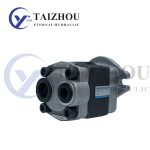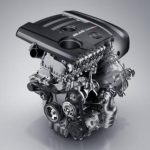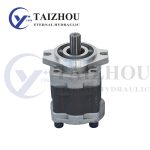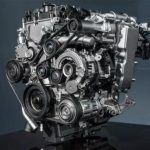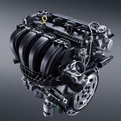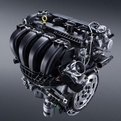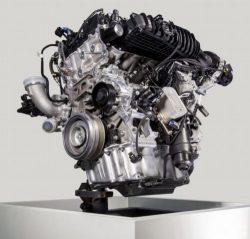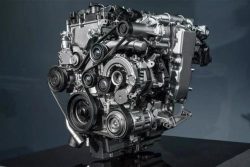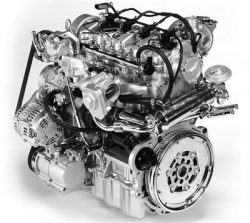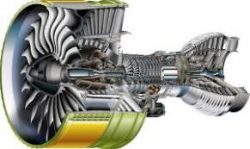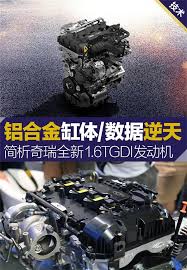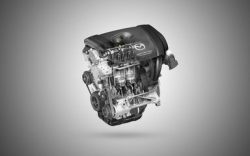Danfoss Motor , Motor: Mature Direct Injection Technology
Danfoss Motor :”In-cylinder direct injection motors will become the mainstream in the market?”
Whether it is the carburetor motor that can be seen everywhere in the last century, or the EFI motor widely used today, the fuel supply method of gasoline motors has always been “cylinder-mixed”. That is, the gasoline first passes through the carburetor (which has been eliminated) or the fuel injector is sprayed out, and is mixed with fresh air in the intake manifold to become a “mixed gas”. Before the motor cylinder intake valve has not been opened, the mixture is stored in the intake manifold, and the mixture can enter the combustion chamber due to the negative pressure of the combustion chamber after the valve is opened, and then passes through the end of the compression stroke of the piston. The spark plug ignites a violent burning. Even today’s extremely popular electronically controlled fuel injection systems are advanced only in the timing and number of fuel injection nozzles controlled by the computer, or the basis for “out of cylinder mixing”.
The disadvantage of “cylinder mixing” is obvious. The mixture entering the combustion chamber can only be passively controlled by the opening and closing of the valve, and the degree of adaptation to different operating conditions of the motor is not as good. Moreover, the injector has a certain distance from the combustion chamber. The mixing of gasoline and air is greatly affected by the intake air flow, and the tiny oil particles are adsorbed on the pipe wall and cannot be fully used. To this end, various supercharging technologies and variable valve technologies have been born to more flexibly control the mixing of the gas into the cylinder and to improve the combustion efficiency of the mixture.
But as our requirements for motor power performance and environmental performance are getting higher and higher, supercharging technology and variable valve technology are a bit overwhelming. The supercharging pressure of the mixture can continue to increase, but it is a great challenge for power smoothness and mechanical reliability; the number of valves cannot be increased indefinitely, and the adjustment of valve timing and valve lift is insurmountable. Physical limitations. At this time, the clever motorers began to think, why not arrange the fuel injection steps in the cylinder like a diesel motor? In fact, today’s mechanical manufacturing technology has allowed them to do this. In this context, direct fuel injection technology in fuel cylinders has become possible.
What is unique about direct injection in a cylinder?
The advanced direct-injection gasoline motor uses a diesel-like fuel supply technology that provides the required pressure of more than 100 bar through a piston pump to supply gasoline to the electromagnetic injectors located in the cylinder. The motor is then controlled to inject the fuel directly into the combustion chamber at the most appropriate time. The accuracy of the control is close to milliseconds. The key is to consider the installation of the injector and leave a certain space in the upper part of the cylinder.
Since the operation of the fuel injection can be controlled by the computer to affect the state of the mixed gas in the combustion chamber, it is of course necessary to adopt a targeted injection method according to the operating conditions of the motor. For example, the Audi (VW) FSI technology, which we are quite familiar with and already mature, uses two different oil filling modes, namely, layered oil filling and uniform oil filling mode.
The stratified oiling mode is used when the motor is running at low or medium speeds. At this time, the throttle valve is in a half-open state, and air enters the cylinder from the intake pipe and hits the top of the piston. Since the top of the piston is formed into a special shape, a desired eddy current is formed in the vicinity of the spark plug. When the compression process is nearing the end, a small amount of fuel is ejected by the injector to form a combustible gas. This layered oiling method can fully improve the economy of the motor, because in the lower speed and lower load, in addition to the need to form a higher concentration of oil and gas mixture around the spark plug, other parts of the combustion chamber need only a mixture of higher air content. That’s it, and FSI makes it very close to the ideal state. When the throttle is fully opened and the motor is running at high speed, a large amount of air enters the cylinder at a high speed to form a strong vortex and is evenly mixed with the gasoline. Thereby promoting the full combustion of the fuel and improving the power output of the motor. The computer constantly changes the oil filling mode according to the working condition of the motor, and always maintains the most suitable oil supply mode. The full use of fuel not only improves fuel efficiency and motor output but also improves emissions.
What are the constraints on direct injection motors?
Everything is very good, but it is really difficult to implement. The first problem that needs to be solved in the direct injection in the cylinder is the placement of the injector. Since the spark plug and the multiple valves have been arranged on the top of the cylinder, it is already quite compact, so the injector should be placed close to the intake valve side. Due to the addition of the injector, the requirements for the design and manufacture of the cylinder head are quite high. If the arrangement is unreasonable and the manufacturing precision is not up to the requirements, the rigidity is insufficient or even the air leakage can not be lost.
At the same time, because the mixing space and time of oil and gas are quite short, the injector of the direct injection system in the cylinder must be supplemented with a high pressure boosting system to greatly improve the injection pressure and efficiency of the fuel, and achieve a high atomization effect. There is a better mixed performance. In addition, the combustion chamber and piston of the direct injection system in the cylinder also have special guide grooves for the gas turbine to generate cyclone vortex after entering the combustion chamber to improve the atomization effect and combustion efficiency of the mixed oil and gas.
All of the above problems can be solved by the motorers of the car manufacturers, but there is a bigger constraint that even the manufacturers can do nothing, that is, the problem of gasoline quality. Due to the in-cylinder direct injection technology, the time of mixing gasoline and air and the external conditions are the same, and in order to improve the combustion efficiency of the mixture, the compression ratio of the direct injection motor is usually higher, so the direct injection motor is for gasoline. The quality requirements are very high. Moreover, not only the requirements for fuel markings, but also other indicators such as chemical properties and combustion characteristics. For example, the FSI in-cylinder direct injection motor of the domestic Audi (Volkswagen) model is a pity that it has to endure the important function of layered lean combustion because of oil problems. Interestingly, the SIDI dual-mode direct injection motor of the domestic Cadillac model is equipped with both stratified and uniform combustion functions, and even the 93rd gasoline can be used.
What are the mature direct injection technologies now?
Just like supercharging technology and variable valve technology, although each manufacturer uses a different name for its own products, the actual principle is similar. The most mature and most recognized in-cylinder direct injection technology is the non-VW and Audi FSI technology. Other manufacturers are certainly not to be outdone, Cadillac’s SIDI dual-mode direct injection motor, Mercedes-Benz CGI direct injection motor, Mitsubishi GDI direct injection technology, direct injection machine type in Toyota GR motor series, Mazda’s DISI direct injection system and so on. Due to space limitations, the difference between these direct injection techniques can only be discussed with the riders in the future.
https://www.xjetl.com



